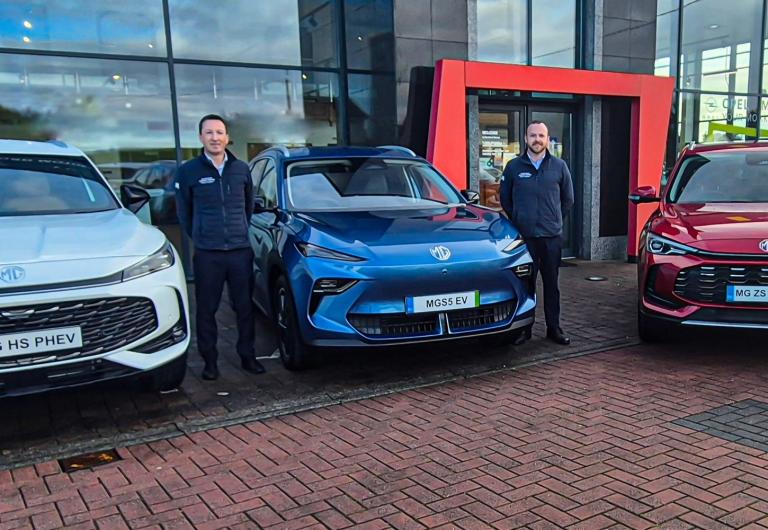Why Toyota’s new RAV4 plug-in hybrid ticks all but one box
Published on 22 January, 2022
Overview
Here’s a car that sums up a lot of what’s good – and a little bit of what’s bad – about plug-in hybrids.
In fairness, the car in question, Toyota’s new RAV4 PHEV, is not alone in meriting such polar-opposite characterisation. There are many others.
As there really is only one factor on the debit side of the good-and-bad ledger, let me get the latter out of the way first. The official figures claim, and they are official and perfectly legit, that this new RAV uses as little as one litre for every 100km travelled. You have read that correctly. One litre of petrol to cover 100km – put that down at 235MPG.
There is absolutely no way in this endangered world that anyone can manage such a minuscule amount of petrol-sipping in real-world driving.
But the manufacturers can legitimately claim it, because the system for testing plug-ins allows scope for frequency of charging the battery (around 2 hours 45 minutes), thereby keeping the petrol usage to an absolute minimum.
So, yes, theoretically it is possible. But theory does not materialise at the pumps and put savings in your pocket. It is not a realistic proposition if you want to get to Kerry within a reasonable timeframe, like same-day arrival.
If you had to stop every 75km or so (the claimed maximum distance it can cover using battery power only) to charge up you could be all day getting wherever you planned.
But there is a more realistic scenario, just in case you think I’m being too harsh on the whole idea of ‘one-litre syndrome’.
If you commute and your average journey is 20km each way and you can charge at either end and the petrol engine is only used on longer journeys at weekends, then maybe we could more realistically talk about needing only a few litres per 100km, but not one litre. Not really.
The good news is that you end up paying only €140 road tax on the extremely low emissions of 22g/km.
I used at least six times the official amount (I reckoned six litres/100km) on parts of my driving.
That included a few gentle forays around town, and a good long spin to the midlands and back with the engine on a lot of the time. I could have done better had I taken things a little easier.
Which brings me to the lengthier credit side of the ledger. The reason I shunted up the fuel consumption was due to the RAV4 plug-in taking me by surprise with its performance.
The added power of this PHEV version made it a much snappier drive. Truth to tell, I got carried away a bit and had to be careful not to damage the undercarriage on one bouncy-boggy route which shall remain nameless for reasons of local diplomacy.
And I was glad of the traction and grip of the intelligent all-wheel-drive system over some gritty roads. This was quick (0-100km in six seconds) and powerful (306bhp). That’s impressive and it blows away the perception that this is just a RAV4 with a bigger battery and a plug socket.
It is a serious piece of work, built on rock solid foundations. I admit there are sportier drives – the Ford Kuga for one. There is more stated styling among the raft of rivals. The RAV4 is an average eye-catcher but this is an SUV few can beat for its consistent high level across several areas of the car.
The cabin was spacious and sturdily comfortable though I definitely wanted more adjustment on the steering wheel – and there is a grand boot.
As is so much the case now, your eyes are immediately drawn to the display and info screens on the dash. I found clear graphics and a simple way of finding what I wanted. There is no excuse for anything else these days, is there?
All of which conveys what I said earlier about a level of proficiency that others still concede is something of a benchmark for the compact crossover class.
There are changes to the front look to emphasise the difference with an ordinary hybrid but nothing much else by way of styling. It looks quite bulky and part of the reason for that is the black roof, white body two-tone treatment which creates visual, not physical, height.
There are all sorts of ways you can set this car for consumption – from EV mode to charge mode and more in between. Me? I left it in hybrid mode and let the system decide when to bring on the engine.
Would I buy it? I’d have to have it on my top-three shopping list but I promise you I’d be first in the queue if they could guarantee me that it would consume only one litre every 100kms. Who wouldn’t jump at the chance to boast that their car can do 235 miles to the gallon?
Factfile
Toyoya RAV4 Plug-in Hybrid: Sport AWD-i, 1-litre/100km, 55-litre tank, 2.5 litre petrol, 306hp, e-CVT, lithium-ion battery, claimed 75km on electric power only, 22g/km, road tax €140. PHEV on test costs from €52,650.
Spec includes: Braked towing capacity 1,500kg, Toyota Safety Sense package to alert and avoid accidents, 7in TFT, 9in touch screen, paddle shifts, 19in alloys, dual zone climate control, front and rear parking sensors, Apple CarPlay/Android auto, rear-view camera.
Latest Reviews

CarsIreland Dealership Awards 2025: Celebrating Excellence Across Ireland

Rochford Motors Joins MG Network as New West of Ireland Dealer

Learn to Drive Smarter with KennCo Insurance and Brendan Tierney